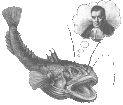UW Aquatic & Fishery Sciences Quantitative Seminar
Peter Kuriyama
School of Aquatic and Fishery Sciences, University of Washington
Should we model or measure growth for age-structured stock assessments?
Abstract
Fisheries stock assessments typically assume fish grow according to a theoretical growth curve (e.g., von Bertalanffy, Richards, or Gompertz). In some cases, such as Pacific hake (Merluccius productus), growth is empirically incorporated into stock assessments with weight-at-age data from research surveys or fishery observations. Estimating growth and incorporating weight-at-age data into stock assessments may each bias fisheries reference points, provided to decision makers, but these biases have not been well studied. Monte Carlo simulations were used to identify conditions under which using empirical weight-at-age in stock assessments provide more robust estimations of stock status and management reference points than when growth is internally estimated. Results of this research will provide guidance to fisheries scientists regarding under what circumstances (i.e., fishing pattern, life-history type, and data availability) it is most beneficial to estimate growth within a stock assessment rather than empirically incorporate growth data.

